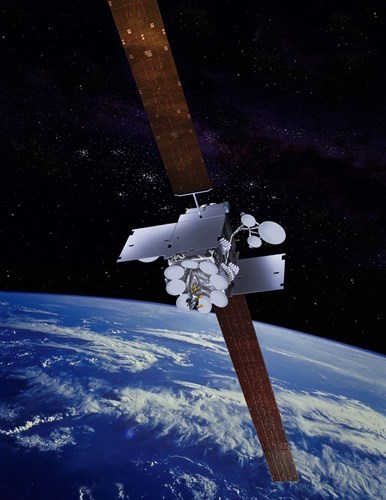01_02_15
70 years of the "Clarke" orbit
In February 1945, with World War II raging, Arthur C Clarke was dreaming of things to come. Although he later became known for his science fiction writing, Clarke was also interested in science fact. In a letter published in the February 1945 issue of Wireless World, a prominent electronics magazine of the day, Clarke proposed the use of geostationary satellites; the mainstay of today’s commercial space sector1.
Clarke’s letter discussed a few technical points regarding spaceflight but the most important paragraph is saved for the end. Almost as an afterthought Clarke writes, “An artificial satellite at the correct distance from the earth would make one revolution every 24 hours; i.e. it would remain stationary above the same spot and would be within optical range of nearly half the earth’s surface.”
As Clarke proposed, a satellite positioned 36,787 km above the equator will rotate at the same speed at which the Earth rotates. This simple physics solution allows satellites to remain fixed at one point in the sky when viewed from the ground. Signals can be beamed up from one ground station and bounced off the satellite to another ground station continuously with the satellite never moving from its location. As the satellite remains in one place the ground stations can be simplified to stare in one direction rather than having to track a moving object. This ability to make the satellite dish as simple as possible has reduced the cost of the user equipment and is one of the reasons satellite television has been able to thrive. Satellite television is not the only use of geostationary satellites however. Other geostationary satellites are used for the delivery of broadband services to unconnected and underserved regions; tele-health services which allow doctors in remote areas to access real-time support from specialists in the major cities and even for helping to narrow the search area for the missing Malaysian MH370 plane.
Whilst the above are all examples of communications services, geostationary satellites are also regularly used for meteorological purposes. The European Meteosat satellites, for example, are positioned in geostationary orbit above Africa. From this perch they are able to view 48% of the earth’s surface, seeing from the east coast of North America, the whole of Europe and Africa and into the heart of the Middle East. By observing the weather patterns developing in the Atlantic and measuring moisture and wind speed, weather forecasts can be given some days ahead and warnings provided of approaching storms.
In Clarke’s letter he proposed that the first geostationary satellites were “perhaps half a century ahead”. In the end, he only had to wait 20 years to see his dream become a reality when on the 6th April 1965, Intelsat 1 “Early Bird” was launched. Intelsat 1 weighed just 145 kg and had a power of only 40 Watts, the power consumption of a light bulb. Despite being designed to last eighteen months, the satellite was not decommissioned until January 1969, although it was reactivated later that year to help with the transmissions of the historic Apollo 11 Moon landing.
Clarke’s prediction wasn’t all correct however. His Wireless World letter suggested “three repeater stations, 120 degrees apart in the correct orbit, could give television and microwave coverage to the entire planet.” He envisaged three large space stations in geostationary orbit where astronaut crews would repair and reconfigure the satellite to meet demands. This was not the way the industry developed. Instead it went down the route of multiple disposable satellites. Today there are about 1,200 active satellites in orbit. Approximately one third of these satellites are geostationary satellites. The latest generation of geostationary satellites dwarf Intelsat 1, weighing in excess of 6,000 kg at launch, producing 20 kW of power and designed to work for fifteen years or more. These satellites form the mainstay of the commercial space sector and the space insurance market. Approximately half of the four hundred commercial geostationary satellites are insured with a total insured exposure of USD 25 billion.
70 years on from Arthur C Clarke’s visionary letter the use of satellites is ubiquitous. We use satellites on a daily basis for communications, weather forecasts, disaster warnings and many other services. The commercial space sector has grown into an industry that generated over USD 200 billion of revenue in 2014 and made a significant contribution to the USD 5 trillion communications industry. That’s an incredible accomplishment for an afterthought in a letter!
1 Clarke followed up his February 1945 letter with a longer article on the concept of geostationary satellites (titled Extra Terrestrial Relays) in the October 1945 issue of Wireless World


